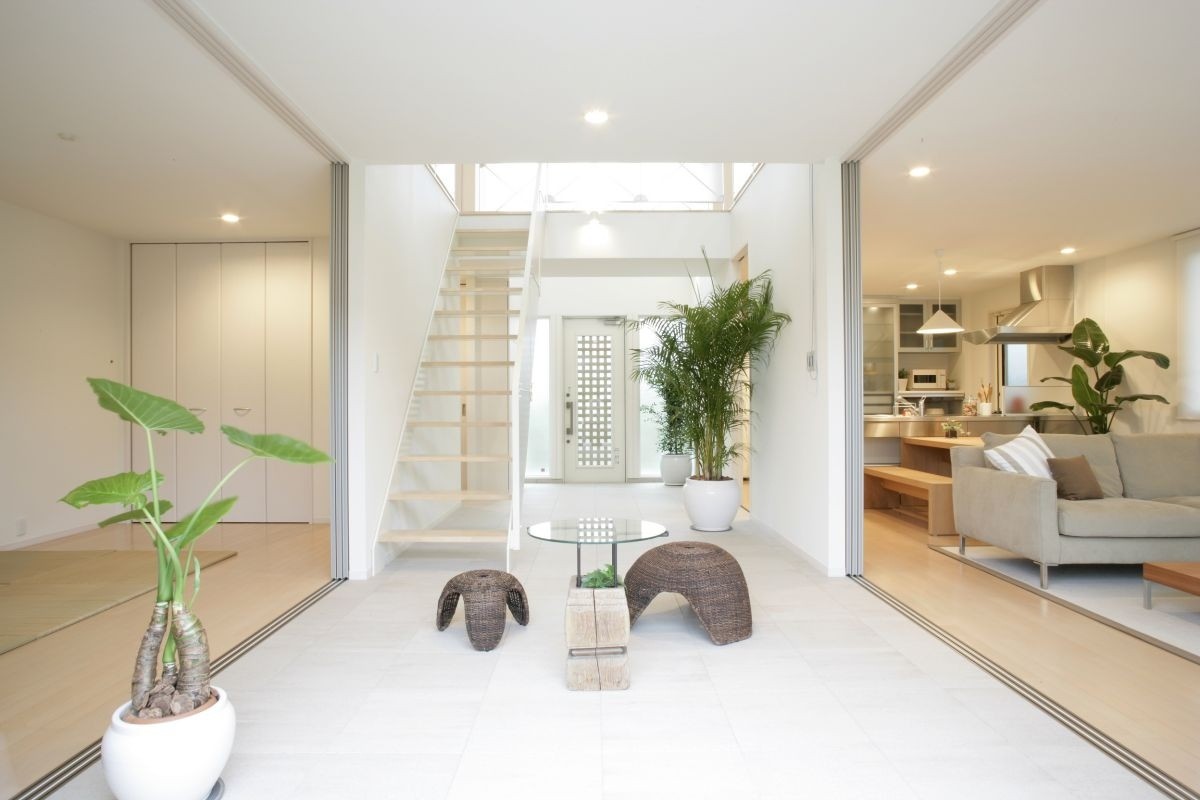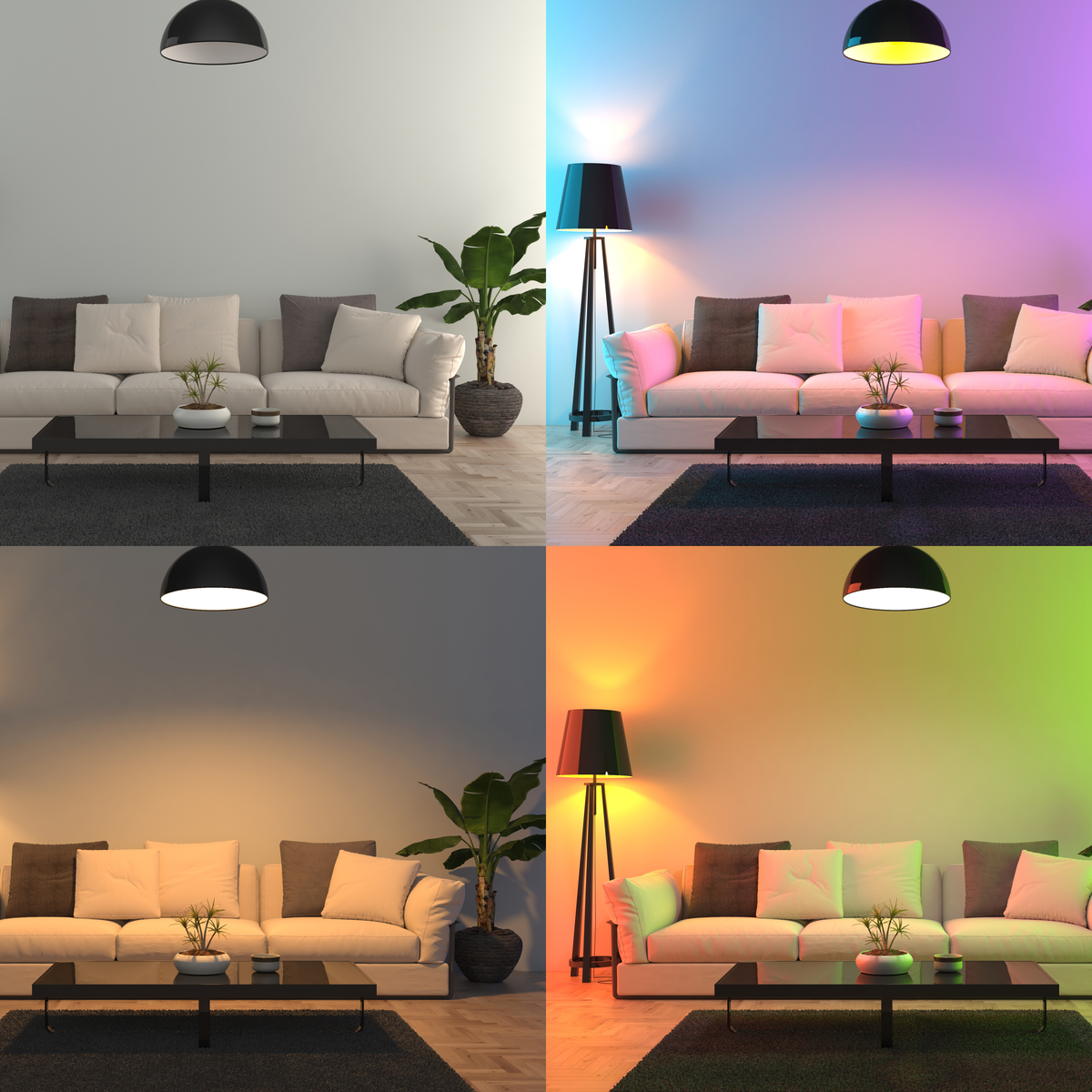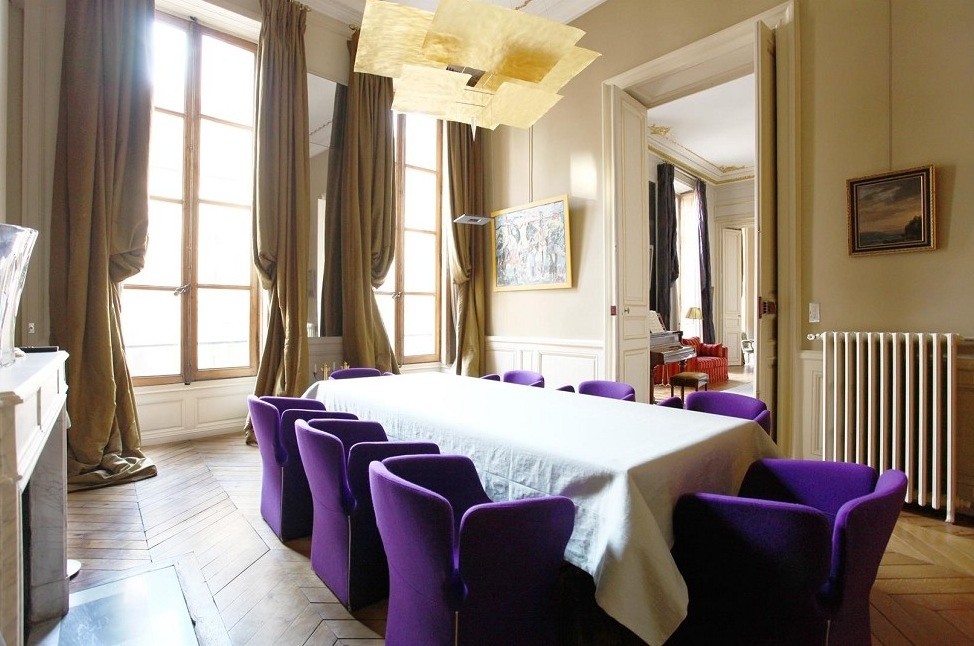Zen interior house creates a space of serenity and mindfulness. It’s about using carefully chosen elements to foster a sense of calm and connection with nature. This guide dives deep into the principles of Zen design, exploring how to arrange spaces, select materials, and incorporate natural elements to craft a truly tranquil home environment.
From the core philosophies of Zen to practical applications in various rooms, this exploration will cover everything you need to understand to build a Zen-inspired home. We’ll discuss the essential aspects of color palettes, furniture styles, and spatial arrangement, culminating in a holistic approach to design that promotes inner peace and harmony.
Defining Zen Interior Style
Zen interior design, at its core, is an approach to creating spaces that foster tranquility and mindfulness. It draws inspiration from the principles of Zen Buddhism, emphasizing simplicity, natural materials, and a harmonious relationship with the environment. This style seeks to minimize distractions and promote a sense of calm and focus, inviting the inhabitants to experience a deeper connection with themselves and the present moment.Zen design prioritizes the concept of “wabi-sabi,” appreciating the beauty in imperfection and impermanence.
This aesthetic value is reflected in the deliberate use of natural elements and unadorned forms, acknowledging the transient nature of existence. The goal is to create a space that is both visually appealing and spiritually enriching, a place of contemplation and serenity.
Core Principles of Zen Design
The core principles of Zen interior design stem from the Buddhist philosophy of mindfulness and simplicity. These principles guide the selection of materials, colors, and overall spatial arrangement. Key tenets include a focus on minimalism, natural elements, and a sense of calm and balance. The use of asymmetry and negative space also plays a crucial role, avoiding visual clutter and encouraging a meditative state.
Elements Commonly Found in Zen Homes
Zen-inspired spaces often feature specific elements that embody the philosophy’s principles. These include natural materials like bamboo, wood, and stone, which evoke a connection with the natural world. Simple, unadorned furniture pieces are frequently seen, often crafted from natural materials, minimizing visual distractions. The use of neutral color palettes, such as earthy tones and muted greys, further enhances the sense of tranquility and calmness.
Historical and Cultural Context
Zen Buddhism originated in China and later spread to Japan, profoundly impacting its culture and aesthetics. Zen design draws upon these historical influences, incorporating the philosophy’s emphasis on simplicity, mindfulness, and the appreciation of natural beauty. The practice of meditation and contemplation are central to Zen culture, which translates into a design aesthetic that promotes serenity and introspection.
Traditional Japanese gardens, with their carefully arranged stones and plants, are prime examples of the integration of Zen principles into a physical space.
Philosophical Underpinnings
The philosophical underpinnings of Zen aesthetics are deeply rooted in the Buddhist concept of impermanence (annica) and the interconnectedness of all things (pratītyasamutpāda). These principles guide the creation of a space that is both beautiful and mindful, reflecting the ever-changing nature of reality. The concept of “wabi-sabi” is fundamental, recognizing the beauty in imperfections and the acceptance of impermanence.
These philosophies encourage a detached observation of the present moment, fostering a sense of peace and serenity.
Comparison with Other Styles
Zen design contrasts sharply with styles that emphasize ostentation or excess. Unlike Baroque or Rococo designs, which often feature elaborate ornamentation and vibrant colors, Zen focuses on restraint and subtle beauty. Contemporary designs, while sometimes incorporating natural elements, often prioritize functionality and modern aesthetics over the philosophical underpinnings of Zen. Minimalist designs share some common ground with Zen, but often lack the focus on mindfulness and the appreciation of imperfections.
Key Characteristics of Zen Interior Spaces
| Characteristic | Description | Examples |
|---|---|---|
| Materials | Natural, unadorned, and organic materials like wood, stone, bamboo, and rattan. | Wooden floors, stone countertops, woven baskets |
| Color Palettes | Muted, earthy tones like beige, grey, brown, and muted greens. | Earthy tones in walls, furniture, and textiles. |
| Textures | Natural textures, often rough or unpolished, creating a connection with the environment. | Natural wood grain, rough stone surfaces, woven textiles |
| Furniture | Simple, unadorned, and often low-profile. | Low seating, minimalist coffee tables, simple side tables |
| Lighting | Soft, diffused lighting that mimics natural light, promoting a calm atmosphere. | Ambient lighting, floor lamps, natural light |
| Spatial Arrangement | Asymmetrical layouts and open spaces, promoting a sense of serenity and openness. | Uneven spacing of furniture, large windows, open floor plans |
Spatial Arrangement and Flow
Zen interior design prioritizes a sense of calm and harmony, achieved through thoughtful spatial arrangement. This approach focuses on creating a space that encourages mindfulness and fosters a peaceful atmosphere. The flow of energy and the use of natural elements are key considerations in achieving this tranquil aesthetic.The effective use of space in a Zen home is not about filling it but about strategically creating pockets of serenity and tranquility.
This involves carefully considering the placement of furniture, the flow of light, and the incorporation of natural elements to minimize visual clutter and promote a sense of spaciousness.
Space Utilization for Tranquility
Zen spaces prioritize decluttering and a sense of spaciousness. Furniture is strategically placed to avoid visual congestion and encourage easy movement. This creates a sense of openness and freedom, conducive to relaxation and meditation. Open floor plans, when appropriate, further enhance this feeling of spaciousness.
Natural Light and Ventilation
Natural light and ventilation are crucial elements in a Zen interior. Sunlight, filtered through sheer curtains or natural blinds, is often embraced to bring warmth and a connection to the outdoors. Well-ventilated spaces promote fresh air and a sense of lightness, contributing to the overall feeling of tranquility. This reduces reliance on artificial lighting, further enhancing the serene atmosphere.
Furniture Arrangement for Mindfulness
Careful furniture placement is vital in a Zen home. Minimalist furniture pieces, often with natural materials like wood or bamboo, are chosen to minimize visual clutter. Items are arranged to promote easy movement and a sense of calm. For example, a low coffee table surrounded by comfortable seating encourages conversation and relaxation without overwhelming the space. Similarly, strategically placed bookshelves or wall-mounted units can display decorative elements without creating a cluttered aesthetic.
Creating Spaciousness in a Zen Interior
A sense of spaciousness in a Zen interior is cultivated through several strategies. Open floor plans, when feasible, contribute to this effect. Mirrors can also strategically reflect light and create an illusion of greater space. Using lighter colors, particularly whites and pastels, for walls and furnishings can also help to expand the visual perception of the room.
Additionally, maintaining a clean and uncluttered environment contributes to a sense of spaciousness.
Negative Space and Calmness
Negative space, or empty space, plays a crucial role in a Zen interior. The deliberate avoidance of overcrowding allows the eye to rest and promotes a sense of calm. This is achieved by leaving ample space between furniture pieces, allowing for clear lines of sight, and creating visual breathing room. In essence, the absence of clutter allows the eye to focus on the essential elements of the space, enhancing the sense of peace and tranquility.
Spatial Layouts for Zen Homes
Different spatial layouts can be adapted to suit the needs of a Zen home. A thoughtful consideration of the intended function of each space is key.
| Layout Type | Description |
|---|---|
| Open-plan living | Encourages a sense of spaciousness and flow between different areas. Ideal for promoting social interaction and relaxation. |
| Separate zones with clear boundaries | Creates distinct spaces for different activities, while still maintaining a cohesive and tranquil atmosphere. |
| Multi-level design | Utilizes vertical space to create a sense of depth and intrigue, maintaining a sense of serenity throughout the different levels. |
Material Selection and Texture
Zen interior design prioritizes natural materials, reflecting a deep connection with nature. The choice of materials isn’t arbitrary; each selection contributes to the overall sense of tranquility and harmony, echoing the core principles of the philosophy. The tactile and visual qualities of these materials further enhance the meditative atmosphere.The emphasis on natural materials in Zen spaces stems from the philosophy’s inherent connection to the environment.
This connection fosters a sense of peace and serenity, inviting a mindful approach to living. The selection of materials is thus an integral part of the overall design process.
Preferred Materials
Natural materials are paramount in creating a Zen atmosphere. Wood, stone, bamboo, and other natural elements are frequently used. Their inherent beauty and tactile qualities contribute significantly to the design’s holistic aesthetic. The warm tones and subtle variations of natural wood, the cool calmness of stone, and the elegant simplicity of bamboo are key characteristics of this design style.
Importance of Natural Materials
Natural materials contribute to the calming and grounding ambiance of a Zen space. Their inherent qualities evoke a sense of connection to the natural world, promoting a sense of serenity and tranquility. The textures and patterns of natural materials add depth and visual interest, creating a visually appealing and engaging environment. This is especially true when the materials are used in their natural state, unadorned or minimally processed.
Tactile Qualities and Visual Appeal
The tactile qualities of natural materials are significant in Zen design. The smooth surface of polished stone, the warm grain of wood, and the delicate texture of bamboo all evoke a sense of calm and invite interaction. The visual appeal of these materials is equally important, with natural variations in color and grain adding depth and complexity to the space.
The natural color palette and textures in a Zen interior evoke a sense of peace and tranquility.
Examples of Texture Contributions
The careful selection of textures creates a cohesive and harmonious aesthetic in a Zen space. A smooth stone surface beside a rough-hewn wooden beam can create a visual and tactile contrast that’s both intriguing and calming. The interplay of light and shadow across these textures can further enhance the atmosphere of tranquility. Similarly, the subtle variations in the grain of a wooden floor or the varied tones of a stone wall can create a sense of depth and dimension.
Comparison of Materials
| Material | Texture | Visual Appeal | Tactile Quality |
|---|---|---|---|
| Wood | Varied, from smooth to rough | Warm, natural tones | Warm, comforting |
| Stone | Smooth, rough, or layered | Cool, calming tones | Cool, grounding |
| Bamboo | Delicate, striated | Elegant, simple | Light, airy |
Natural Dyes and Finishes, Zen interior house
Natural dyes and finishes are frequently used in Zen interiors. These methods often prioritize sustainability and respect for the environment. Natural dyes, extracted from plants or minerals, provide subtle hues that blend seamlessly with the natural materials. The use of natural finishes, like oils or waxes, enhances the inherent beauty of the wood and stone, preserving their natural aesthetic and creating a welcoming and authentic feel.
Furniture and Accessories

Source: home-designing.com
Creating a Zen interior isn’t just about the space itself; it’s deeply connected to the carefully selected furniture and accessories. The right pieces can amplify the feeling of tranquility and harmony, while the wrong ones can disrupt the peaceful atmosphere. This section explores the vital role of furniture and accessories in achieving a true Zen aesthetic.Furniture choices directly influence the overall ambiance.
Minimalist designs, natural materials, and thoughtful placement contribute to a sense of serenity. Accessories, while seemingly small, play a crucial role in grounding the space and adding personality. Selecting the right pieces and materials is key to ensuring the space effectively promotes relaxation and focus.
Furniture Styles for Zen Aesthetics
Furniture styles should complement the minimalist nature of a Zen space. Avoiding overly ornate or busy designs is crucial. Simple, clean lines and natural materials are essential. Consider low seating options, such as floor cushions or low sofas, as these promote a sense of groundedness and encourage relaxation.
Significance of Minimalist Furniture Choices
Minimalist furniture choices are vital in a Zen space. They reduce visual clutter and promote a sense of spaciousness, allowing the mind to rest. Less is more. Overly complicated or detailed pieces can be distracting and create a feeling of chaos. A minimalist approach emphasizes functionality and allows the beauty of the space to shine through.
Role of Accessories in Enhancing the Zen Ambiance
Accessories, though seemingly small, play a significant role in the overall Zen ambiance. They can add subtle touches of color and texture without overwhelming the space. Natural elements, such as plants and stones, can add a touch of serenity. Careful consideration should be given to the color palette, ensuring it complements the overall design and promotes a sense of calm.
Appropriate Materials for Zen Furniture
Natural materials are key to achieving a Zen aesthetic. Materials like natural wood, bamboo, and rattan are not only beautiful but also evoke a sense of connection with nature. These materials are often associated with tranquility and offer a warm, inviting feel. These materials contribute to the overall serene and grounded atmosphere.
Creating Calm Through Furniture and Accessories Selection
The selection of furniture and accessories is instrumental in creating a sense of calm. Choosing pieces that are both aesthetically pleasing and functional is key. Consider the size and shape of the furniture to ensure it complements the space without feeling cramped. Natural materials and neutral color palettes can further enhance the calming effect. Consider how each piece contributes to the overall sense of harmony.
Table: Furniture Styles and Suitability for Zen Homes
| Furniture Style | Suitability for Zen Homes | Description |
|---|---|---|
| Simple, Low Profile Sofas | High | Low sofas or floor cushions create a sense of groundedness and encourage relaxation. |
| Natural Wood Furniture | High | Natural wood pieces evoke a connection with nature and offer a warm, inviting feel. |
| Bamboo Furniture | High | Bamboo pieces bring a sense of lightness and airiness to the space, ideal for creating a serene atmosphere. |
| Rattan Furniture | High | Rattan furniture, with its natural weave, complements the Zen aesthetic, bringing a sense of warmth and tranquility. |
| Overstuffed, Ornate Furniture | Low | Avoid overly ornate or detailed furniture, as they can be distracting and disrupt the peaceful ambiance. |
Zen Interior Design for Different Spaces
Bringing Zen principles into your home fosters a sense of calm and tranquility, adaptable to various living spaces. The essence of Zen lies in simplicity, harmony, and mindful living, which can be achieved through thoughtful design choices in every room. From the serene living room to the tranquil bedroom, the principles of Zen can be incorporated to enhance the overall atmosphere and promote a sense of well-being.Applying Zen principles across different rooms creates a cohesive and calming home environment.
The key is to adapt these principles to the specific function and ambiance of each space, ensuring a harmonious balance between aesthetics and functionality. This adaptability is crucial for creating a personalized Zen space that truly reflects your individual needs and preferences.
Zen in the Living Room
The living room, often the heart of the home, can be transformed into a tranquil haven by incorporating Zen elements. Natural light and airy spaces are paramount. Consider incorporating a low, minimalist coffee table, a simple, natural-toned rug, and comfortable seating made from natural materials like bamboo or rattan. Soft lighting, such as Japanese paper lanterns or strategically placed lamps, can further enhance the peaceful ambiance.
Zen in the Bedroom
A Zen bedroom promotes restful sleep and relaxation. Keep the color palette calm and muted, utilizing soft grays, whites, and pastels. Choose natural bedding materials like linen or cotton, and consider incorporating a tatami mat or a simple meditation space. Avoid clutter and keep the space uncluttered for a sense of calm and peace. Natural wood furniture and minimal accessories further enhance the serenity.
Zen in the Bathroom
A Zen bathroom is a sanctuary of tranquility, promoting a sense of calm and rejuvenation. Employ a calming color palette, focusing on soft blues, greens, and whites. Incorporate natural materials like stone or wood for countertops and flooring. A minimalist sink and shower, along with natural light, create a peaceful retreat. Add plants to add a touch of nature and create a calm atmosphere.
Zen Design for Different House Types
Adapting Zen design principles to different house types is crucial for achieving a harmonious balance. For smaller apartments, prioritize decluttering and using multi-functional furniture. For larger homes, consider creating distinct Zen zones within different areas of the house. In a contemporary house, incorporate natural materials like wood, stone, and bamboo alongside clean lines. For a traditional house, choose calming colors and incorporate natural light, blending Zen principles with existing aesthetics.
Enhancing Functionality with Zen Design
Zen design isn’t just about aesthetics; it’s about enhancing functionality while promoting tranquility. A minimalist approach to storage helps maintain a clear and uncluttered space. Strategically placed furniture and lighting enhance the flow of the room and create a sense of calm. Open spaces and natural light further contribute to a sense of spaciousness and relaxation. This thoughtful consideration of space allows the functionality of the room to enhance the overall tranquility.
Zen Design for Different Rooms: A Comparison
| Room | Color Palette | Materials | Lighting | Accessories |
|---|---|---|---|---|
| Living Room | Neutral, earthy tones | Natural wood, rattan, bamboo | Soft, diffused lighting | Minimalist décor, plants |
| Bedroom | Soft pastels, whites | Linen, cotton, natural wood | Ambient lighting, bedside lamps | Simple textiles, calming artwork |
| Bathroom | Calming blues, greens, whites | Stone, wood, natural fibers | Natural light, diffused lighting | Plants, minimalist accessories |
This table summarizes the key design elements for creating a Zen atmosphere in different rooms. The comparison highlights the adaptable nature of Zen principles, allowing for customization to suit each room’s unique function and aesthetic.
Illustrations and Visuals
Visual representations are crucial in conveying the essence of Zen interior design. They help translate the philosophy of simplicity, tranquility, and harmony into a tangible and relatable experience. Illustrations and visuals allow for a deeper understanding of the design principles and aesthetic appeal of a Zen space.
Zen Gardens
Zen gardens, or rock gardens (karesansui), are miniature landscapes that embody the essence of Zen philosophy. These gardens often feature carefully placed rocks, gravel, and sometimes water elements. The deliberate arrangement of these elements aims to evoke a sense of serenity and contemplation. The precise positioning of each stone and the deliberate emptiness of the surrounding space invite the viewer to contemplate the beauty of imperfection and the interconnectedness of nature.
Symbolism in Zen Gardens
The elements in a Zen garden hold symbolic meaning. Rocks often represent mountains, islands, or other natural features. Gravel, meticulously raked into patterns, symbolizes water, and the careful arrangement of these elements evokes a sense of balance and harmony. The intentional absence of vegetation emphasizes the importance of the elements that are present and their subtle interplay.
Zen-Inspired Interior
A Zen-inspired interior space evokes a feeling of calm and serenity. Imagine a room with a light color palette, such as soft whites, grays, or beige tones. Natural materials like wood and bamboo are frequently incorporated into the design. The furniture is simple and unadorned, allowing the natural light and surrounding space to be the focal points. The overall effect is one of understated elegance and tranquility.
This space might include a tatami mat floor, minimalist furniture pieces, and natural light, creating an atmosphere of mindfulness.
Aesthetic Appeal of a Zen Interior
The aesthetic appeal of a Zen interior design lies in its simplicity and its ability to evoke a sense of peace and tranquility. The use of natural materials, the subdued color palette, and the uncluttered design create a serene environment that fosters introspection. The minimalist aesthetic encourages a sense of calm and encourages contemplation, allowing the space to be a place of relaxation and rejuvenation.
Zen Meditation Space Design
A Zen meditation space is a sanctuary for contemplation and inner peace. A simple design featuring a low, cushioned seating area, a small table for offering incense or water, and a wall-mounted shelf for a few essential objects would be suitable. The walls should be a calming color like off-white or gray. Natural light should be maximized, with appropriate window treatments to maintain privacy and serenity.
A focal point like a Zen garden or a single, unadorned hanging object could add to the meditative atmosphere. Natural materials like wood or bamboo should be used to create a connection with nature and reinforce the Zen aesthetic.
Final Summary: Zen Interior House
In conclusion, crafting a Zen interior house is a journey into mindful living. By embracing the core principles of simplicity, natural materials, and harmonious spatial arrangement, you can cultivate a home that fosters tranquility and well-being. This guide has provided a comprehensive overview of the elements involved in creating such a space. Remember, the key is to integrate these principles thoughtfully, allowing the design to reflect your personal values and preferences while creating a truly special environment.
Frequently Asked Questions
What are some common misconceptions about Zen interior design?
Many people think Zen design is overly simplistic or austere. However, it’s about mindful balance and intentional choices. The focus is on creating a serene space that promotes well-being, not necessarily a stark, minimalist environment. It’s about achieving a harmony between aesthetics and functionality.
How can I incorporate Zen principles into a small space?
Even in a small space, you can still achieve a Zen aesthetic. Focus on decluttering, using light and airy colors, and choosing multifunctional furniture. Mirrors can help create the illusion of more space, and strategic lighting can enhance the sense of openness.
What are some affordable ways to achieve a Zen look?
Natural materials like bamboo and wood can be surprisingly affordable. You can also look for pre-owned or vintage furniture pieces that fit the aesthetic. Simple accessories, like natural fibers or small potted plants, can add a touch of Zen without breaking the bank.
How can I maintain a Zen atmosphere in a busy household?
Establishing daily routines and mindfulness practices can help maintain a Zen atmosphere. Regular cleaning, decluttering, and taking time for meditation can help maintain the sense of calm. Even small moments of quiet reflection can contribute to the overall serenity.
- AGC Glass A Global Leader in Glass Manufacturing - June 2, 2025
- Voice-controlled home Smart living simplified - May 6, 2025
- Smart Thermostat House Your Eco-Friendly Home - May 6, 2025









